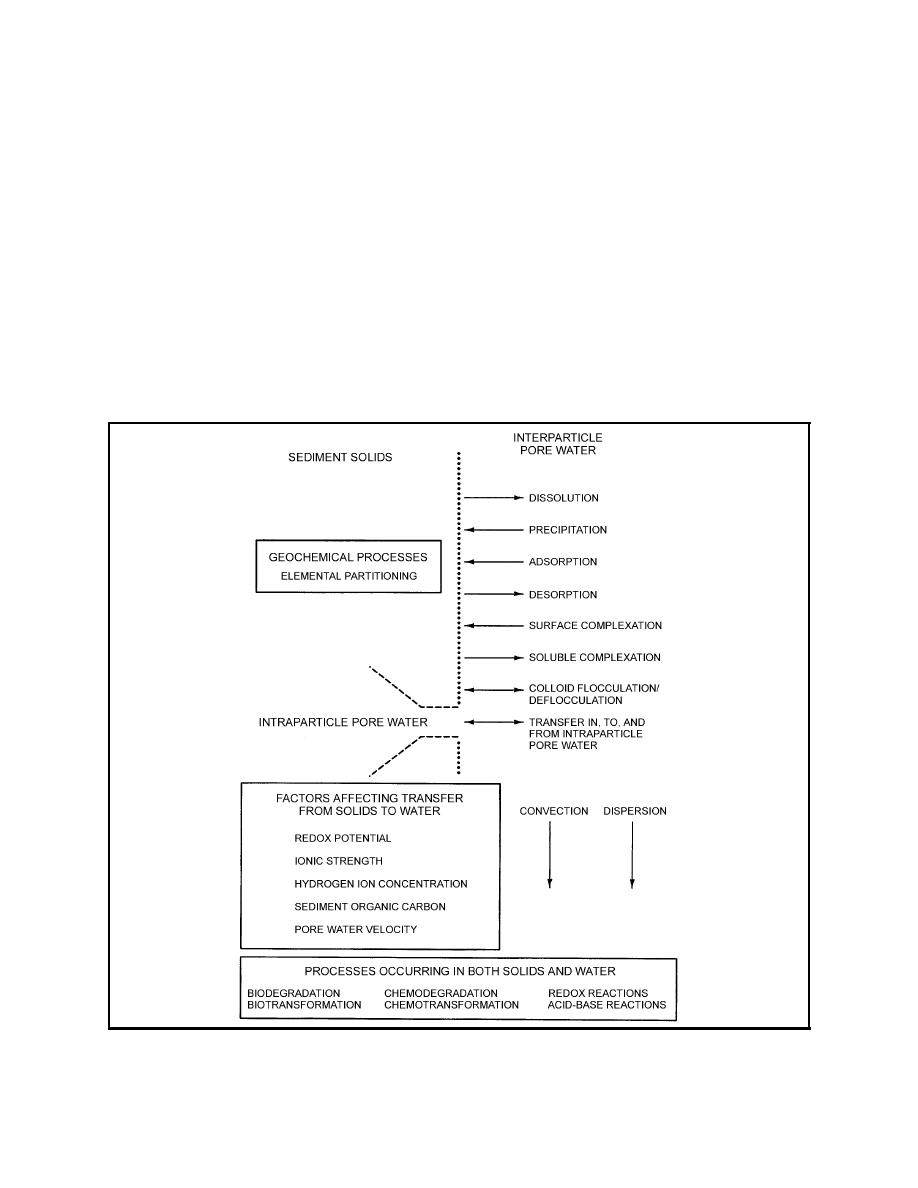 |
||
|
|
||
|
Page Title:
Figure 3. Factors influencing transfer processes between solids and water |
||
| |||||||||||||||
|
|
 ERDC TN-DOER-C16
July 2000
in detail in the following sections on the source, CDF and vadose zone considerations, and saturated
zone and receptor factors. Discussion of the evaluations is focused on upland CDFs but most of
the considerations apply as well to all CDFs.
water, a difference in chemical potentials must exist. Chemicals flow from a region of high chemical
potential to a region of low chemical potential just as electric current flows from a region of high
electrical potential to one of lower electrical potential or as mass flows from a position of high
gravitational potential to one of low gravitational potential. When chemical potentials are equal,
the net transfer of contaminant across the solid-water interface is zero, and the mass of contaminant
in each phase is constant, but not necessarily equal. The processes shown in Figure 3 control the
rate at which equilibrium is reached and the equilibrium distribution of contaminant between solid
and aqueous phases. Once equilibrium is reached, the ratio of contaminant mass in the solid phase
to the contaminant mass in the aqueous phases does not change.
Figure 3. Factors influencing transfer processes between solids and water
4
|
|
Privacy Statement - Press Release - Copyright Information. - Contact Us - Support Integrated Publishing |